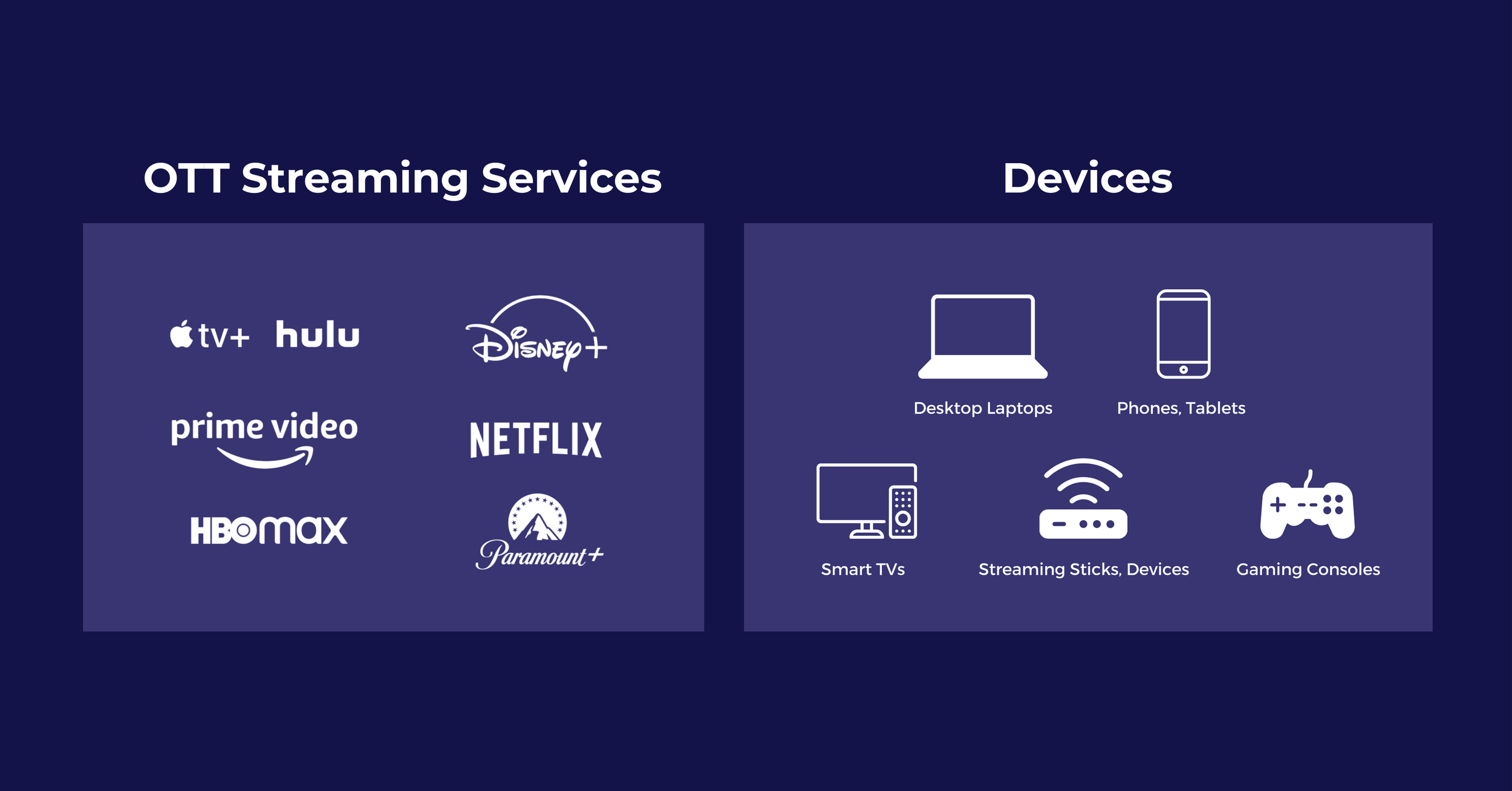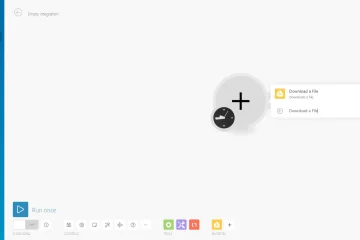In the rapidly evolving landscape of digital advertising, understanding the nuances between different platforms is crucial for advertisers. Two terms that frequently arise are CTV vs OTT. While they are often used interchangeably, they have distinct characteristics that can impact advertising strategies and outcomes. This article will explore the key differences between CTV and OTT, helping advertisers make informed decisions about their digital marketing efforts.
What is CTV?
Connected TV (CTV) refers to any television that can connect to the internet and access content beyond traditional cable or satellite services. This includes smart TVs with built-in internet capabilities, as well as standard TVs connected to the internet via external devices like Roku, Apple TV, Amazon Fire Stick, or gaming consoles.
> Key Characteristics of CTV:
- Internet Connectivity: CTV devices are capable of connecting to the internet, allowing users to stream content directly.
- Larger Screens: CTVs typically provide content on larger screens, enhancing the viewing experience.
- App Integration: CTVs often come with a variety of pre-installed apps or the ability to download new ones, including streaming services, games, and utility apps.
- Ad Targeting: Advertisers can leverage connected TV advertising to deliver highly targeted ads based on user data and viewing behavior.
What is OTT?
Over-The-Top (OTT) refers to the delivery of television and film content via the internet, bypassing traditional cable or satellite providers. OTT content can be accessed on various devices, including smartphones, tablets, computers, and CTVs.
> Key Characteristics of OTT:
- Content Delivery: OTT content is streamed over the internet, independent of traditional broadcasting methods.
- Device Versatility: OTT services can be accessed on multiple devices, not just TVs. This includes smartphones, tablets, and laptops.
- Subscription Models: OTT platforms often operate on subscription models (e.g., Netflix, Hulu) or ad-supported models (e.g., YouTube, Peacock).
- Ad Flexibility: OTT advertising allows for a variety of ad formats, including pre-roll, mid-roll, and banner ads, which can be tailored to the viewer’s device and preferences.
CTV vs OTT: Major Differences
While CTV and OTT share similarities in that they both leverage the internet to deliver content, they differ significantly in terms of device usage, content delivery, and advertising opportunities.
1. Device Specificity
- CTV: Specifically refers to internet-enabled television devices.
- OTT: Refers to content delivery over the internet and can be accessed on various devices including CTVs, mobile devices, and computers.
2. Viewing Experience
- CTV: Generally offers a traditional viewing experience on larger screens, akin to watching conventional television but with the enhanced interactivity and selection of internet-based services.
- OTT: Offers flexibility in viewing, allowing consumers to watch content on-the-go on smaller screens, in addition to traditional television screens.
3. Advertising Models
- CTV Advertising: Focuses on delivering ads within the TV viewing experience, leveraging large screen engagement. It often involves programmatic advertising, where ads are automatically placed based on user data and behavior.
- OTT Advertising: Provides a wider range of ad formats and placements across different devices. This includes performance marketing strategies where ads are placed based on user actions and preferences.
Advertising Opportunities on CTV
Connected TV advertising offers unique opportunities for advertisers to reach highly engaged audiences. Given the nature of CTV, viewers are often more attentive, leading to higher engagement rates. Some key benefits include:
- Precision Targeting: Utilizing data from viewing habits and user profiles to deliver targeted ads.
- High Engagement: Larger screens and fewer distractions can lead to higher viewer engagement with ads.
- Programmatic Advertising: Automated ad buying processes that allow for real-time bidding and placement based on data-driven insights.
- Enhanced Storytelling: The larger screen format allows for more immersive and impactful ad experiences, enabling advertisers to tell more compelling stories.
Advertising Opportunities on OTT
OTT advertising is versatile and can reach audiences across multiple devices, providing a broad range of touchpoints. Advertisers can benefit from:
- Diverse Ad Formats: Flexibility in ad types, including video ads, display ads, and interactive ads.
- Wide Reach: Access to viewers on various devices, increasing the potential audience.
- Demand Generation: Ability to create demand through engaging content and personalized ads.
- Granular Analytics: Detailed insights into viewer behavior and ad performance across different devices and platforms.
Challenges and Considerations
Both CTV and OTT advertising come with their own sets of challenges. Understanding these can help advertisers navigate the digital advertising landscape more effectively.
> For CTV Advertising:
- Measurement and Attribution: Tracking the effectiveness of ads and their impact on consumer behavior can be complex. Accurate measurement requires sophisticated tools and methodologies.
- Ad Skipping: Some platforms may allow users to skip ads, reducing exposure. Advertisers need to create compelling and engaging content to minimize skipping.
- Technical Integration: Ensuring seamless integration of ads across different CTV devices and platforms can be challenging due to the diversity of devices and operating systems.
> For OTT Advertising:
- Fragmentation: The wide variety of devices and platforms can lead to a fragmented advertising approach. Consistency in ad delivery and performance tracking can be difficult to maintain.
- Ad Fatigue: Overexposure to ads on multiple devices can lead to viewer fatigue and reduced effectiveness. Balancing ad frequency and content relevance is crucial.
- Data Privacy: Navigating data privacy regulations while leveraging user data for targeted advertising is a critical concern. Compliance with laws such as GDPR and CCPA is essential.
Future Trends in CTV and OTT Advertising
As technology evolves, the lines between CTV and OTT are likely to blur further. Some emerging trends include:
- Enhanced Interactivity: Ads that allow viewers to interact directly, creating a more engaging experience. Interactive ads can include features like clickable elements, surveys, and shoppable content.
- AI and Machine Learning: Utilizing advanced algorithms to optimize ad placement and targeting in real-time. These technologies can analyze vast amounts of data to predict viewer behavior and deliver personalized ads.
- Cross-Platform Campaigns: Coordinating ad campaigns across multiple devices and platforms for a cohesive brand message. This approach ensures that viewers receive consistent messaging regardless of the device they use.
- Augmented Reality (AR) and Virtual Reality (VR): Integrating AR and VR technologies into CTV and OTT ads to create immersive and interactive ad experiences. This can significantly enhance viewer engagement and brand recall.
Conclusion
Understanding the distinctions between CTV and OTT is crucial for advertisers aiming to maximize their digital marketing strategies. While CTV focuses on delivering content to internet-connected televisions, OTT encompasses a broader range of devices and viewing experiences. Both platforms offer unique advertising opportunities, from connected TV advertising with its high engagement on large screens to the versatile and far-reaching nature of OTT advertising. By leveraging these insights, advertisers can better navigate the digital landscape, making informed decisions to enhance their performance marketing and demand generation efforts. As the industry continues to evolve, staying abreast of these trends will be key to maintaining a competitive edge in the dynamic world of digital advertising.



